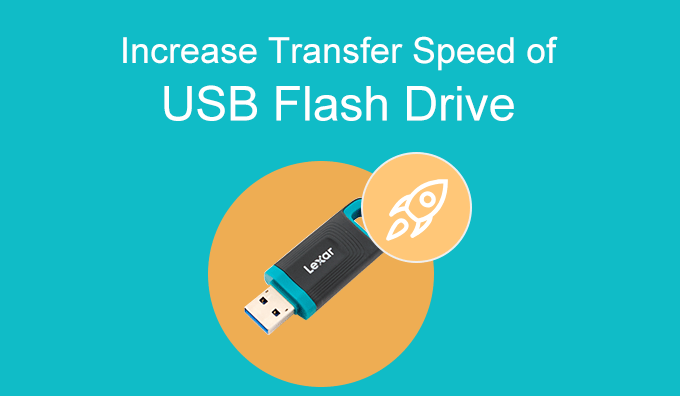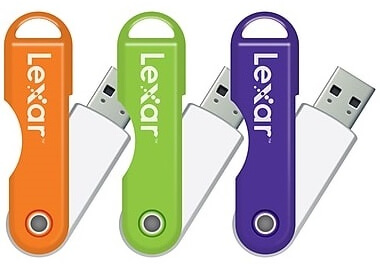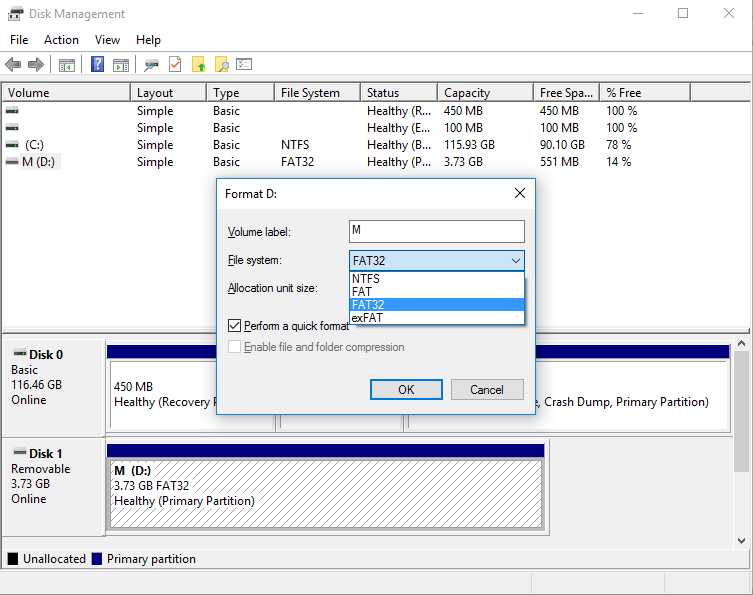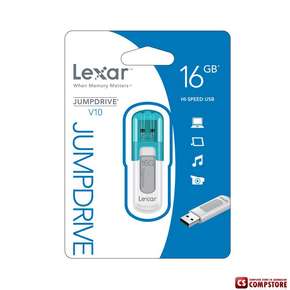There are several methods of transferring files to or from a removable disk.
- Copy and Paste
- Drag and Drop
- Send To
- Copy and Paste using keyboard shortcuts
Additional Reference: Transferring large files(4GB or larger)
METHOD 1 - Copy and Paste (top)
Windows 7 or Vista
Windows XP
Mac OS X
Windows 10
Using Windows 7 or Vista
1. Plug the USB flash drive directly into an available USB port.
NOTE: A message indicating that a new device has been detected at the lower right hand of your monitor. It MAY take a few seconds to be detected.
2. If the USB flash drive or external drive folder does NOT open automatically, follow these steps:
a. Click Start > Computer.
b. Double-click on the Removable Disk associated with the USB flash drive.
3. Navigate to the folders in your computer containing files you want to transfer.
4. Right-click on the file you want to copy, then select Copy.

The download will result in a file called lexarusbformat.zip on your hard drive. Right-click the file and select “Extract All”. The file extracting function will prompt you for a location put the extracted files. Right click the unallocated space of the Lexar flash drive and select “Format Partition”. In the pop-up window, specify the volume label, choose file system and cluster size if you want to. Click OK and Commit to format Lexar USB drive. We can also do the same job in cmd command prompt with the following orders: diskpart; list disk; select disk ###; format And there're other options on how to format partition or disk in Windows 10. Format partition in Partition Expert Wipe Lexar USB Drive Clean.
5. Return to the Removable Disk window, right-click within the window, then select Paste.
Using Windows XP
1. Plug the USB flash drive directly into an available USB port.
NOTE: A message indicating that a new device has been detected at the lower right hand of your monitor. It MAY take a few seconds to be detected.
2. If the USB flash drive or external drive folder does NOT open automatically, follow these steps:
a. Click Start > My Computer.
b. Double-click on the Removable Disk associated with the USB flash drive.
3. Navigate to the folders in your computer containing files you want to transfer.
4. Right-click on the file you want to copy, then select Copy.
5. Return to the Removable Disk window, right-click within the window, then select Paste.
Using Windows 10:
1. Plug the USB flash drive directly into an available USB port
NOTE: You will see 'USB Drive' in windows explorer


2. Navigate to the files on your computer that you want to transfer to the USB drive
3. Right-click on the file you want to copy, then select Copy
4. Go to the mounted USB drive, right click and select Paste
Lexar Disk Utility


Using Mac OS X
1. Plug the USB flash drive directly into an available USB port.
NOTE: A No Name or Untitled disk icon will appears on your desktop.
2. Double-click your Macintosh HD (Hard Drive) icon to open it.
3. In finder select the files you wish to transfer
4. Press-and-hold the Command key and press C.
5. Double-click your Removable Disk icon to open it.
6. Press-and-hold the Command key and press V.
METHOD 2 - Drag and Drop (top)
Windows 7 or Vista
Windows XP
Mac OS X
Windows 10
Using Windows 7 or Vista
1. Plug the USB flash drive directly into an available USB port.
2. Allow the computer to recognize the drive, then click Start > Computer.
3. Double-click on the Removable Disk associated with the USB flash drive.
4. Navigate to the folders in your computer containing files you want to transfer.
5. Click and drag the files you want to the Removable Disk.
6. Release the mouse.
Using Windows XP
1. Plug the USB flash drive directly into an available USB port.
2. Allow the computer to recognize the drive, then click Start > My Computer.
3. Double-click on the Removable Disk associated with the USB flash drive.
4. Navigate to the folders in your computer containing files you want to transfer.
5. Click and drag the files you want moved over to the Removable Disk.
6. Release the mouse.
1. Plug the USB flash drive directly into an available USB port
Note: You will see 'USB Drive' in windows explorer
Lexar Usb Flash Drive Driver
2. Navigate to the files on your computer that you want to transfer to the USB drive
3. Select the file you want to transfer
4. Click and hold file to drag it to the USB drive.
Using Mac OS X
1. Plug the USB flash drive directly into an available USB port.
NOTE: A No Name or Untitled disk icon will appears on your desktop.
2. Double-click your Macintosh HD (Hard Drive) icon to open it.
Dvi to hdmi adapter for mac mini. Free mac iphoto download.
3. Select files you want to drag over
4. Drag files from your Macintosh HD to the Removable Disk.
METHOD 3 - Send To (Windows) (top)
1. Plug the USB flash drive directly into an available USB port.
2. Navigate to the folders in your computer containing files you want to transfer.
3. Right-click on the file you want to transfer to your removable disk.
4. Click Send To and select the Removable Disk associated with the USB flash drive.
METHOD 4 - Copy and Paste using keyboard shortcuts (Windows) (top)
1. Plug the USB flash drive directly into an available USB port.
2. Click on your desired file to select it.
NOTE: You can select multiple files by holding down the Ctrl while left click on the desired files. Or you can select all files by holding down Ctrl and press A.
3. On your keyboard, hold down the Ctrl key and press C.
4. Navigate to the desired folder destination.
5. Hold down the Ctrl key and press V.
